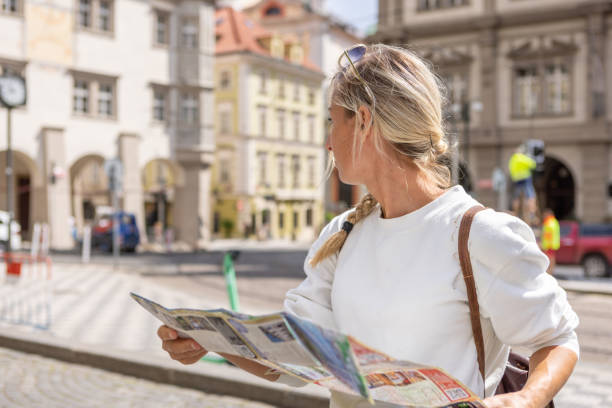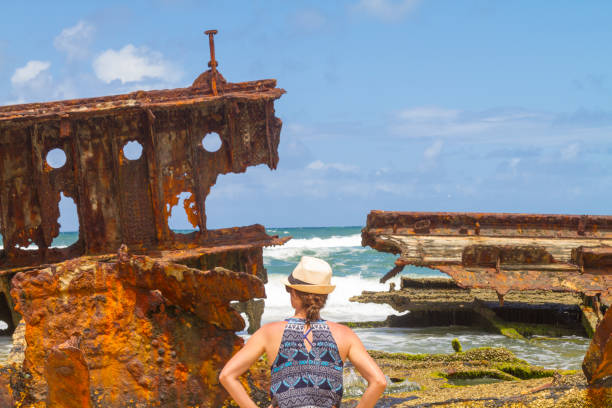Traveling offers countless opportunities for breathtaking visuals—whether it’s capturing the vibrancy of a bustling city, the serenity of a quiet beach at sunset, or the thrill of hiking up a mountain. If you’re looking to document your adventures and create cinematic vlogs that transport your audience into your journey, there are a few key tips to keep in mind. From choosing the right equipment to mastering storytelling through editing, this guide will help you take your travel videos from ordinary to extraordinary.
1. Plan Your Shots: Storytelling is Key
Great travel videos aren’t just a collection of pretty pictures—they tell a story. Before you start shooting, think about the story you want to convey through your footage. Are you documenting a specific destination, sharing a personal experience, or showcasing a particular adventure? Having a clear narrative will help guide your shooting and ensure that your video has a cohesive flow.
Tips for Planning Your Story:
- Create an Outline or Shot List: Jot down the scenes you want to capture, whether it’s the sunrise over a city, a close-up of local food being prepared, or a wide shot of a landscape. This shot list will help you stay organized and ensure you don’t miss important moments.
- Think About the Beginning, Middle, and End: Every good story has an arc. Even if your video is a montage of clips, having a beginning (e.g., arriving in a new city), a middle (exploring the destination), and an end (reflecting on the experience) will make your video more engaging.
- Consider Emotional Impact: Cinematic travel videos often aim to evoke emotion—whether that’s the excitement of new experiences, the awe of natural beauty, or the joy of cultural immersion. Think about how you want your audience to feel and try to capture those emotions in your shots.
Tip: Watch other travel vlogs for inspiration, but don’t copy them—find your unique angle and storytelling style.
2. Choose the Right Equipment
While you don’t need the most expensive gear to make great travel videos, having the right equipment can make a huge difference in the quality of your footage. Here’s a breakdown of essential gear that can help elevate your videos.
Essential Equipment for Cinematic Travel Videos:
- Camera: A DSLR or mirrorless camera with 4K capabilities is ideal for high-quality footage, but modern smartphones (iPhone, Samsung Galaxy, etc.) can also shoot amazing videos, especially with a stabilizer or gimbal. If you’re using a smartphone, make sure to shoot in landscape mode to capture wide shots.
- Lens: If you’re using a DSLR or mirrorless camera, a versatile lens like a 24-70mm f/2.8 can give you a wide range of focal lengths for different types of shots (wide-angle landscapes, medium close-ups, or tight details). A 50mm f/1.8 is great for portraits or low-light situations.
- Gimbal/Stabilizer: To avoid shaky footage, a handheld gimbal or stabilizer is essential for smooth, cinematic shots. This is especially helpful for walking shots or action sequences.
- Drone: A drone can add stunning aerial shots to your travel video, giving a bird’s-eye view of landscapes, cityscapes, and outdoor adventures. If you’re new to flying drones, consider a beginner-friendly model like the DJI Mini 2 or DJI Air 2S.
- Action Camera: If you’re doing outdoor activities like hiking, surfing, or snorkeling, an action camera like the GoPro Hero 11 is perfect for capturing those moments in tough conditions. It’s waterproof, compact, and versatile.
- Microphone: Good sound quality is crucial for a cinematic vlog. Invest in an external microphone for your camera or smartphone to avoid poor audio from wind, crowds, or background noise. Lavalier (lapel) microphones are great for interviews or personal vlogs.
- Portable Lighting: If you’re shooting indoors or in low-light environments, a small portable light like a Godox or Lume Cube can help brighten up your shots.
Tip: Focus on gear that suits your shooting style. If you’re hiking or exploring remote locations, you might prefer lightweight gear, while a drone is perfect for capturing sweeping landscapes.
3. Capture Beautiful B-Roll and Establishing Shots
B-roll—the supplementary footage that helps tell your story—is what will take your travel video from good to great. These shots are the unsung heroes of cinematic vlogs, providing context and texture to your primary footage.
Ideas for Great B-Roll Shots:
- Establishing Shots: Wide-angle shots of the landscape or city that give the audience a sense of place. Think of a sunset over a city skyline, an aerial shot from a drone, or a long shot of a famous landmark.
- Details: Capture the small moments that tell the story of a place—close-ups of local food, the texture of a street art mural, or the colors of a market stall. These intimate shots give your video depth.
- People and Culture: Capture locals engaged in their daily lives, whether it’s someone working at a café, a street performer, or a vendor selling handcrafted goods. This adds authenticity to your video.
- Action Sequences: If you’re doing an adventure activity, such as hiking, surfing, or cycling, get dynamic shots of the action. Slow-motion can add drama, while wide shots of the landscape show the scale of the experience.
Tip: Use transitions like crossfades or match cuts (when one shot flows into another seamlessly) to weave your B-roll into your main footage for a smoother, more cinematic feel.
4. Master Camera Techniques for Cinematic Shots
A key to achieving cinematic travel videos is understanding how to frame and shoot your footage. Cinematic shots often have a sense of movement, perspective, and composition that elevates the visual storytelling.
Techniques for Cinematic Footage:
- The Rule of Thirds: Imagine your screen divided into nine equal parts with two horizontal and two vertical lines. Position your subject or key elements along these lines or at their intersections to create a more balanced and dynamic composition.
- Wide Angle Shots: Use wide-angle lenses or camera settings to capture sweeping landscapes or cityscapes. These shots help set the scene and immerse your audience in the destination.
- Tracking Shots: Use a stabilizer or gimbal to follow the action smoothly. For example, follow someone walking down a street or cycling through a countryside trail. These dynamic shots add movement and excitement to your video.
- Time-Lapse and Hyperlapse: Time-lapse shots are perfect for showing the passage of time, such as a sunset, the flow of traffic, or crowds gathering at a landmark. Hyperlapse, a technique that involves moving the camera over long distances while maintaining a time-lapse effect, can add a unique and cinematic flair.
Tip: Don’t be afraid to experiment with angles—low angles make buildings look more imposing, while high angles give a sense of the landscape’s vastness. Mix it up to keep your video visually interesting.
5. Edit Like a Pro: Bring Your Story to Life
Editing is where your footage comes together and your travel video really starts to shine. This is the stage where you craft the mood, pacing, and narrative. While there are numerous video editing software options, the principles remain the same.
Tips for Editing Your Travel Video:
- Use Color Grading: Color grading is essential for giving your footage a cinematic look. Use editing software like Adobe Premiere Pro or Final Cut Pro to adjust the contrast, brightness, and saturation. You can also apply LUTs (Look-Up Tables) to add a particular style to your footage—whether it’s warm tones for a sunset or a cooler look for city shots.
- Pacing and Music: The pacing of your video should match the music or the mood you’re trying to convey. Fast, upbeat music works well for action-packed sequences, while slower, more ambient tunes are ideal for emotional or reflective moments. Sync the cuts in your video with the beats of the music to create a more engaging rhythm.
- Use Natural Sound: Don’t be afraid to incorporate ambient sounds from your footage—birdsong, street noise, the sound of the ocean. These natural sounds can make your video feel more immersive and authentic.
- Transitions and Effects: Keep your transitions smooth and minimal. Use wipes, fades, or cross dissolves to move from one scene to another, but avoid overusing flashy transitions that can distract from the story. Slow-motion and hyperlapse effects can add dramatic flair, but use them sparingly.
Tip: Keep your edits tight—edit out unnecessary footage to keep your video engaging and concise. A good rule of thumb is to avoid keeping any clip longer than it needs to be.
6. Engage Your Audience: Include Narration and Text
While cinematic visuals are stunning, narration and text can help provide context, engage your audience, and guide them through your journey. Voiceover narration allows you to share your personal experience and insights, while text can highlight key information (such as place names or travel tips).
How to Engage Your Audience:
- Voiceover Narration: Share your thoughts, reactions, or fun facts about the places you’re visiting. This adds a personal touch and helps connect your audience with your experience.
- Text and Titles: Use text sparingly to highlight key moments, such as the name of a location, time of day, or an interesting cultural fact. Titles and lower thirds can also be used to introduce sections of your video.
- **Call-to-Action
**: At the end of your video, encourage viewers to like, comment, and subscribe if they enjoyed your content. You can also ask them to share their own experiences or travel tips in the comments.
Tip: Keep your text and narration concise. Avoid over-explaining the footage—let the visuals do most of the storytelling.
Final Thoughts
Creating a cinematic travel vlog takes practice, but by following these tips and focusing on storytelling, shooting techniques, and editing, you’ll be able to capture the essence of your travels in a way that’s both visually stunning and emotionally engaging. Whether you’re documenting a solo adventure, a cultural journey, or an outdoor expedition, your videos will not only inspire others to explore the world, but also preserve your memories in the most beautiful way possible.
Happy filming!





